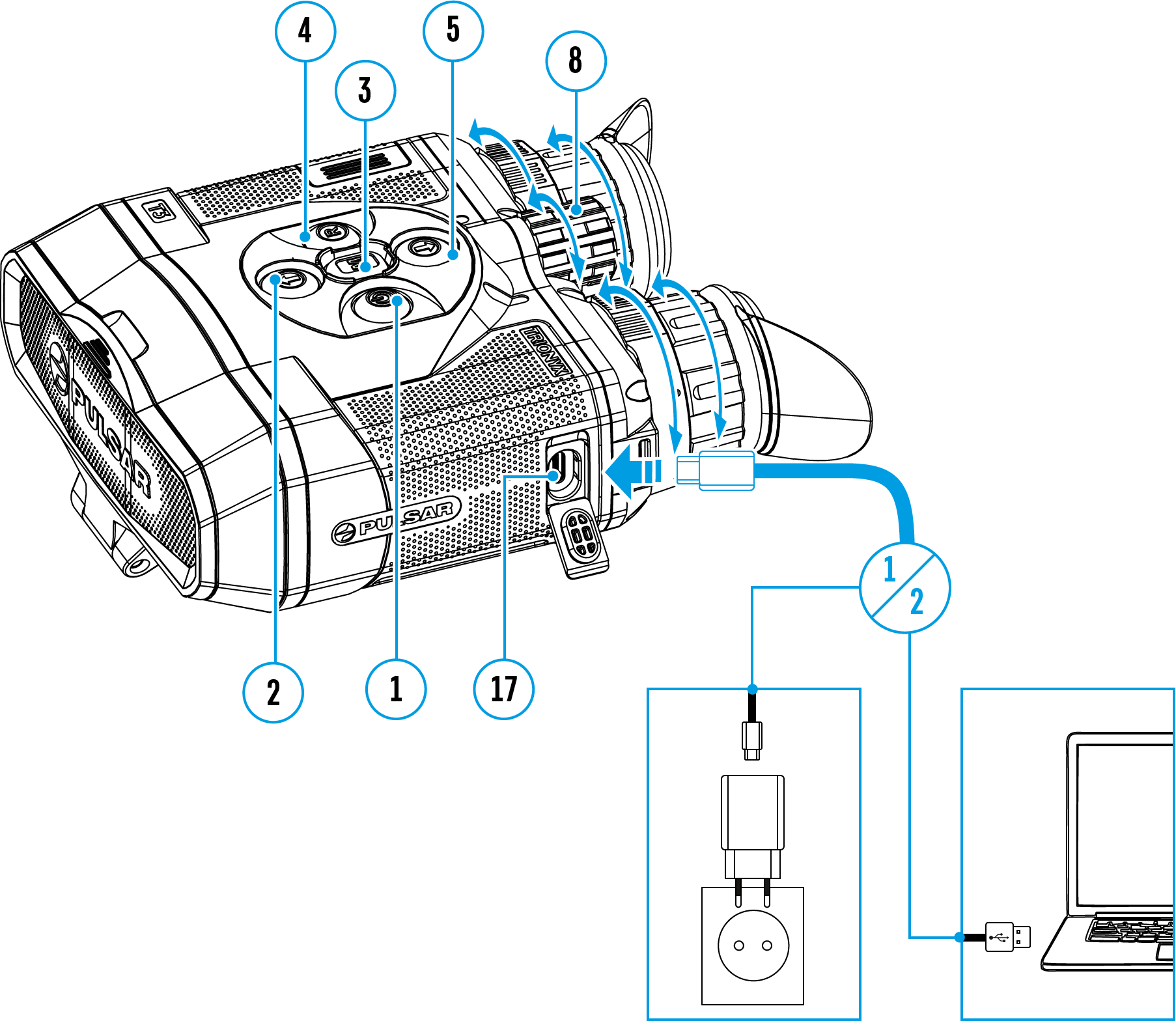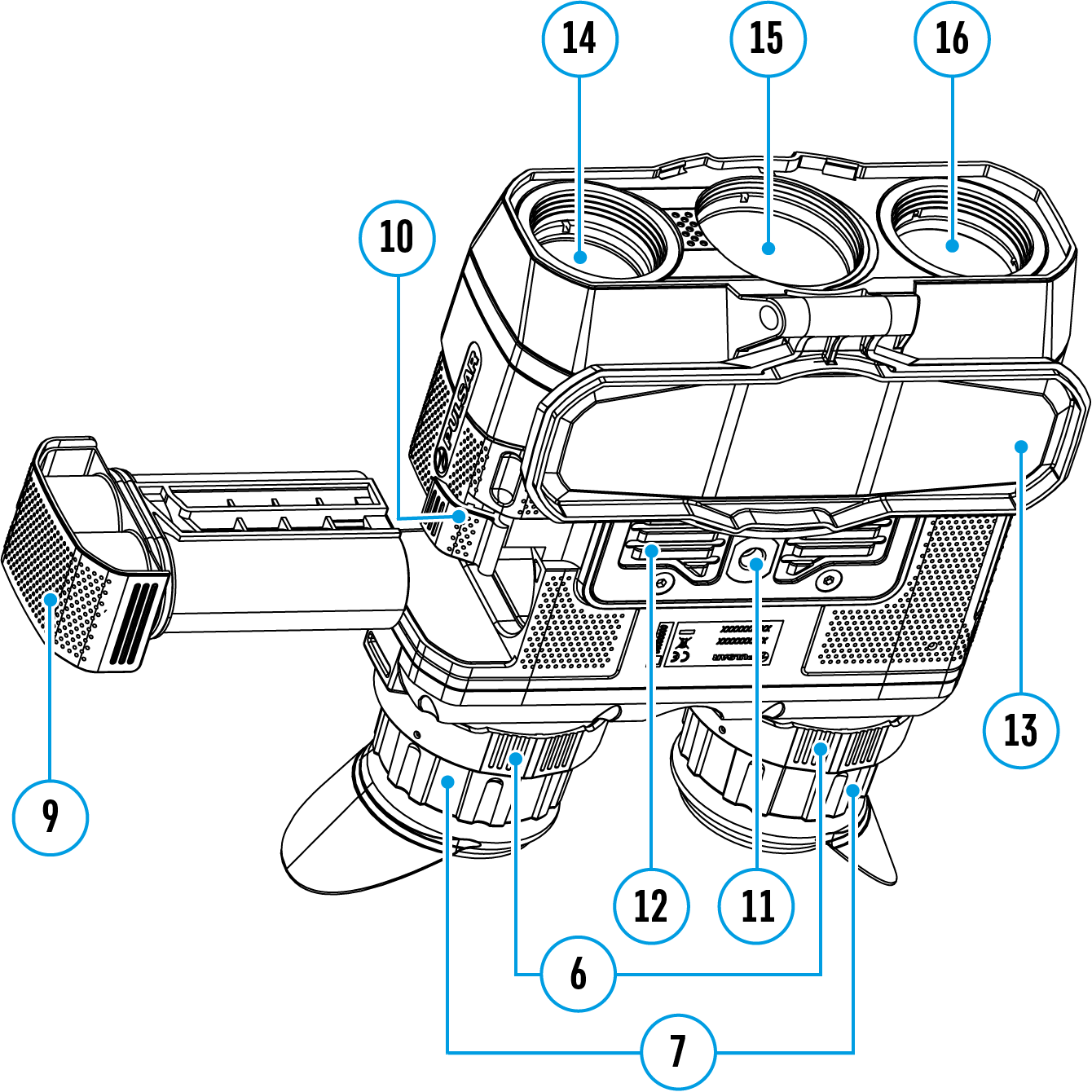The device has three operating modes: Thermal Imaging, Digital and Fusion.
To switch between operating modes, briefly press the MODE (2) button.
Thermal Imaging Mode
Thermal imaging mode  is designed to detect the observed object.
is designed to detect the observed object.
By converting thermal radiation into an image visible to the human eye, the device can detect many important details hidden from human vision.
The advantage of the thermal-imaging mode is that it does not require external light sources – a thermal imaging microbolometer is sensitive to the objects' intrinsic radiation. As a result, the thermal imaging mode works equally well during the day and night as well as in utter darkness.
Digital Mode
Digital mode  allows you to identify an object of observation, and visualize terrain and vegetation in detail.
allows you to identify an object of observation, and visualize terrain and vegetation in detail.
In this mode, the device detects near-infrared radiation, which allows you to see the object of observation in low light conditions.
The device’s built-in IR illuminator switches on when there is insufficient light.
Fusion Mode
It combines the advantages of digital and thermal imaging modes.
Fusion mode  allows you to combine the images of the thermal and digital channels. This makes it possible to see the observed object and the terrain in the field of view in detail.
allows you to combine the images of the thermal and digital channels. This makes it possible to see the observed object and the terrain in the field of view in detail.
In this mode, the device’s built-in IR illuminator switches on when there is insufficient light.
 English
English German
German French
French Spanish
Spanish Italiano
Italiano English
English Lietuvių
Lietuvių
